What are Portable Monitors
Portable monitors are compact, lightweight displays designed for convenience and mobility. They serve as an additional screen for laptops, smartphones, and other devices, catering to professionals on the go, mobile gamers, and anyone in need of an extra display without the bulk of traditional monitors. These monitors are plug-and-play devices that typically connect via USB, HDMI, or Type-C interfaces, providing a seamless extension of the user’s workspace.
The essence of a portable monitor lies in its slim form factor and ease of use. Unlike standard monitors, these do not require a permanent power source or complex setup. A portable monitor draws power from the device it's connected to or has its own battery. This feature makes them ideal for business travelers, digital nomads, and field workers who often change their working location and need a reliable secondary screen.
The technology behind portable monitors is similar to that of regular LCD or LED displays but optimized for portability. They incorporate lightweight materials and digital signal processing to maintain high-resolution output while being energy efficient. Some models include touch screen capabilities and built-in speakers, offering users an interactive experience akin to tablets but with the added benefit of a larger screen.
Types of Portable Monitors
The market offers a diverse range of portable monitors tailored to various needs and applications. Understanding these types can help in selecting the right product for specific use cases.
Gaming Monitors: These portable displays are optimized for gaming with features such as high refresh rates and low response times. They often include technologies like HDR for improved color and contrast, making them popular among mobile gamers.
Business Monitors: Designed for professionals, these monitors often emphasize color accuracy, a wider viewing angle, and additional security features like anti-blue light technology that reduces eye strain during long work sessions.
Touch Screen Monitors: These interactive screens are equipped with capacitive touch technology, allowing users to navigate their devices directly through the monitor. They're commonly used in presentations and creative processes that benefit from a hands-on approach.
Dual Screen Monitors: Some portable monitors come in pairs allowing users to create a multi-monitor setup on the go. They're particularly useful for multitaskers who need more screen real estate to work efficiently.
High-Definition Monitors: Offering full HD or even 4K resolution, these portable monitors ensure that users don't compromise on visual clarity when away from their primary workstation.
Each type caters to different professional requirements and personal preferences, from enhancing productivity through expanded screen space to providing an immersive entertainment experience.
How to choose Portable Monitors
Selecting the right portable monitor involves considering several factors that align with the needs of a business and its use cases. Here's what businesses should take into account:
Resolution and Screen Size: Determine the level of detail needed for your tasks. High-definition monitors offer crisp visuals important for design work or detailed data analysis. The screen size will also affect portability; larger screens provide more space but may be less convenient to transport.
Connectivity Options: Check compatibility with existing devices. Monitors should have the necessary ports like HDMI or USB-C to connect seamlessly with laptops, smartphones, or gaming consoles without requiring additional adapters.
Display Technology: IPS screens offer wide viewing angles and better color reproduction, which is essential for tasks requiring visual accuracy. TN panels may suffice for general use with faster response times beneficial for gaming.
Portability Features: Weight and thickness are crucial for mobility. A lightweight monitor is easier to carry around while a slimmer profile ensures it fits comfortably in laptop bags or backpacks.
Additional Features: Consider monitors with built-in speakers if audio output is necessary. Touchscreen functionality can enhance interactivity but may not be required for all business applications.
Taking these considerations into account helps ensure that businesses purchase portable monitors that not only meet their immediate requirements but also offer scalability for future needs.
Best Portable Monitors on Alibaba.com
For businesses seeking flexible display solutions without compromising on quality, Alibaba.com stands out as a premier destination for wholesale portable monitors. This global marketplace connects you with an extensive network of suppliers offering a diverse array of products suitable for any professional scenario—whether it's enhancing productivity with dual-screen setups or engaging in high-stakes gaming sessions on-the-go.
Alibaba.com's commitment to fostering seamless international trade is reflected in its user-friendly platform that simplifies finding the right product amidst its vast selection. The array of available features—ranging from high-definition screens with HDR support to anti-blue light monitors suitable for long working hours—ensures that there's something tailored to every business need. Moreover, Alibaba.com's Trade Assurance service provides peace of mind by safeguarding your transactions until delivery is fulfilled.
In essence, Alibaba.com equips businesses with tools needed to thrive in a dynamic world where mobility is key. With its easy-to-navigate site and comprehensive after-sale services like repair or return and replacement policies, selecting the perfect portable monitor becomes an effortless task—allowing businesses to focus on what truly matters: growth and innovation.
Common FAQs for Portable Monitors
What factors should be considered when choosing a portable monitor for professional use?
When selecting a portable monitor for professional use, consider the resolution and screen size for clarity, connectivity options for compatibility with other devices, display technology like IPS for accurate color representation, portability such as weight and thickness for easy transport, and additional features that may enhance productivity or usability.
How do touch screen portable monitors differ from non-touch screen models in a business environment?
Touch screen portable monitors offer interactive capabilities that can be beneficial for presentations, collaborative work, or creative tasks that require a hands-on approach. Non-touch screen models are typically used when touch interaction is not necessary and may provide a cost-effective solution with potentially fewer reflections and smudges.
Are gaming portable monitors suitable for business applications?
Gaming portable monitors are designed with fast refresh rates and low response times, which can be advantageous for video editing or real-time data processing. However, if these features are not required, a business monitor with emphasis on color accuracy and viewing comfort may be more suitable.
What is the advantage of having a dual-screen portable monitor setup?
A dual-screen portable monitor setup allows for multitasking and increased productivity by providing additional screen real estate. This can be particularly useful for data analysis, complex tasks requiring multiple applications open simultaneously, or extending workflows across multiple screens.
How does screen resolution impact the effectiveness of a portable monitor in professional settings?
Higher screen resolutions offer greater detail and clarity, which is essential for tasks that involve fine graphics work, detailed spreadsheets, or high-definition media. A higher resolution can contribute to better work efficiency and accuracy in professional settings.
Can portable monitors with built-in speakers replace external audio solutions?
While portable monitors with built-in speakers provide the convenience of integrated audio output, they may not match the quality or volume of dedicated external speakers. They are best suited for casual listening or situations where space and portability are priorities over audio fidelity.
How does the aspect ratio affect the usability of a portable monitor?
The aspect ratio determines the shape of the display. A 16:9 aspect ratio is common and well-suited for most business applications, including video conferencing and document editing, as it matches the format of most laptops and media content.
What should businesses consider about the refresh rate when purchasing a portable monitor?
The refresh rate affects how smoothly motion is displayed. While a higher refresh rate is beneficial for gaming or video playback, standard business applications like web browsing or word processing typically do not require more than the typical 60Hz refresh rate.
What type of after-sale services are important when buying portable monitors for business use?
After-sale services such as repair options, return and replacement policies, and availability of free spare parts are important considerations to ensure minimal downtime in case of product issues.
How does Alibaba.com's Trade Assurance benefit businesses buying portable monitors?
Trade Assurance on Alibaba.com provides buyers with payment protection until their order is delivered satisfactorily, adding an extra layer of security to transactions and helping businesses buy with confidence.

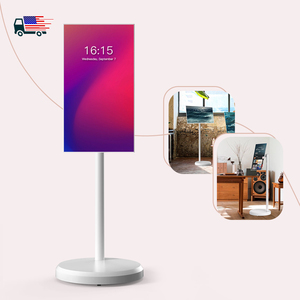

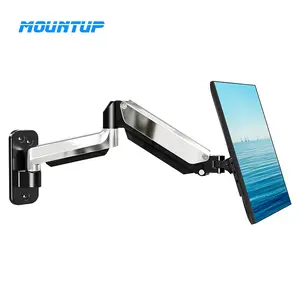



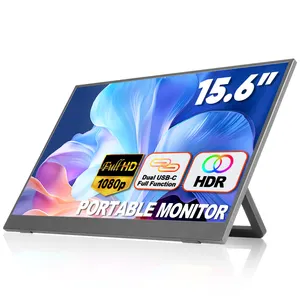








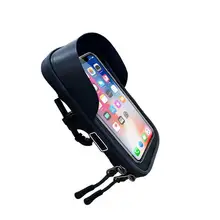
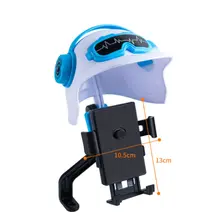


























 浙公网安备 33010002000092号
浙公网安备 33010002000092号 浙B2-20120091-4
浙B2-20120091-4